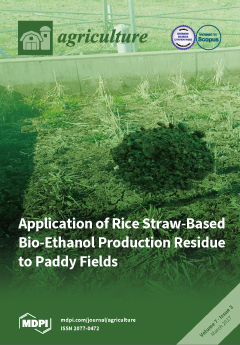Golden Apple Snail (GAS) is the most destructive invasive rice pest in Southeast Asia. The cost of synthetic molluscicides, their toxicity to non-target organisms, and their persistence in the environment have propelled the research of plant-derived molluscicides. Most research efforts have focused on
[...] Read more.
Golden Apple Snail (GAS) is the most destructive invasive rice pest in Southeast Asia. The cost of synthetic molluscicides, their toxicity to non-target organisms, and their persistence in the environment have propelled the research of plant-derived molluscicides. Most research efforts have focused on individual plant extracts for their molluscicidal potency against GAS and have not been proven to be entirely effective in rice field conditions. Selective combination of synergistically acting molluscicidal compounds from various plant extracts might be an effective alternative. In this direction, ethanolic extracts from six different plants (Neem, Tobacco, Nerium, Pongamia, Zinger, and Piper) were evaluated against
Pomacea maculata Perry. Of the various combinations studied, a binary extract (1:1) of nerium and tobacco (LC
90 177.71 mg/L, 48 h), and two tri-herbal extract formulations (1:1:1) of (nerium + tobacco + piper) and (nerium + tobacco + neem) were found to be most effective, with LC
90 values of 180.35 mg/L and 191.52 mg/L, respectively, in laboratory conditions. The synergistic effect of combined herbal extracts resulted in significant reduction in LC
90 values of the individual extracts. The findings of this study demonstrate that the selective combinations of potent molluscicidal herbal extracts are effective for management of
P. maculata under laboratory conditions.
Full article





